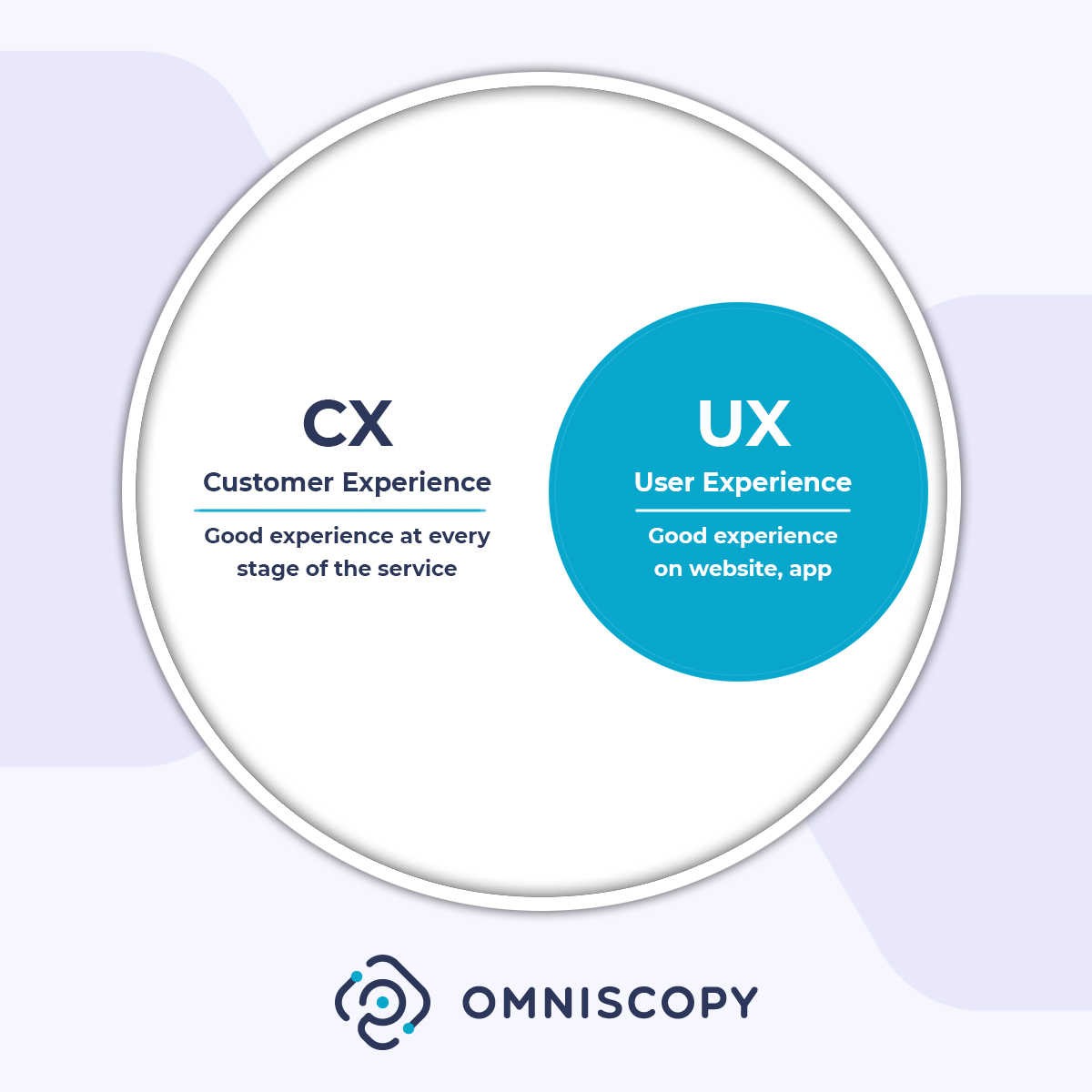Business photo created by rawpixel.com - www.freepik.com
Customer Experience (CX) is becoming more and more important in today’s contemporary world. It has become a critical factor in most business strategies with an increased focus on the customer experience. But what does User Experience (UX) have to do with this? A lot. CX is not just about the service you provide but also about the experience of using it. This is where UX comes in. Here are some things to consider when designing your CX from a UX standpoint.
Why is UX so important for the CX of a website?
For most brands, the UX begins from the time a user gets online. Every tap or click adds to what our Omniscopy Experience team calls the 4 Cs of website CX- continuation, conviction, contentment and conversion. UX being the necessary ingredient for an excellent customer experience right through these 4Cs. But the line is quite thin, and no UX is complete without a measurably usable website. UX on the website needs to be in continuum with the great mobile UX that is seamless. A good UX will help in shaping up the customer’s interaction with the brand’s digital presence.
Why UX is important in designing for CX?
Effective UX design always helps to create the best possible user experience. But before we talk about this, let’s have a look at how UX can help you design for CX.
- Is UX and UX design different?
User experience design and User Experience are two separate areas but, they belong to the same “UX family”. The UX design of a product or service defines its experience at every interaction. For example, a website has a layout, a design, and a color scheme to represent a particular function. User Experience by itself is a larger canvas of all things related to the experience of a user and not just the UX design in silo. Many times UX design without the empathetic and deeper validation of an experience is just an opinion that’s well designed but not necessarily usable.
- UX in Product Design
Websites are mostly an interactive digital brochure of a brand, with little regard to the experience of the design as we see it these days. Mostly look alike and are templatized. With the absence of a demo, it results in a somewhat static visual design, with the customers just reading about the functional aspects rather than the way the products are to be used. Product design with UX considerations gives a better understanding of user’s expectations and requirements and supports design accordingly. If you cannot design then, consult with a UX designer who can do this for you.
- UX in Communications Design
All experiences are in one way of the other communication between people. Be it B2B or B2C or any other focus area of business - communication experience matters. Every pixel of your product or service is communicating with your customers and stakeholders and is responsible for response as per the experience it provides. Either that of abandonment or a delightful conversion. UX in communication design of all digital presence is hence crucial for every business.
How to measure UX and improve the CX?
How are users using your site, product or services? Are they facing any problems while using your product? What kind of experience are they having through their journey of interactions?
Answering these questions will provide a tangible measurement of UX and help improve the CX. Most often you can collect accurate data under local digital laws that will help you to improve and adapt to the desired UX. It will also give you an idea of how you can improve the overall customer experience. UX design would always be an iterative process, making multiple iterations while testing and reviewing before measuring CX of the same.

The principle of UX is to make sure the products are human centered, delightful and easy to use. The goal is to make the experience better one step at a time with no surprises.
User experience is the ultimate goal of CX. According to Duhigg’s Principles of Action framework, every feature has its user intent behind it, whether it is a button, page, interaction, or flow. In other words, UX designers should ask what people do when interacting with the product. A user-centered design approach is essential to create the best in class customer experience.
The results might not be perfect, but the intentions behind the empathetic design will always yield better results. The ultimate goal is to make the customers happy and satisfied. It is what makes everything work together.